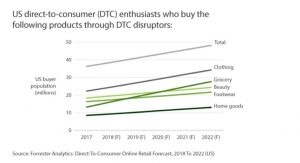by Laurie Sullivan, Staff Writer @lauriesullivan, September 1, 2016
In my younger years, being first in line when the doors opened at the Long Beach Convention Center to see George Harrison proved successful. The no-assigned seat event meant the doors opened and a bunch of crazed kids ran to claim a spot at the edge of the stage. The promoters for the event didn’t sell seats, but rather standing room. The first to come got a spot on the floor closest to the middle of the stage.
Being first to market. Being on the first page in the results of search queries. Being first to appear in a query on the first page. I guess depending on the definition of successful, being first can determine success or failure.
In the electronic components world when talking about firsts or doubling of anything from year to year, techies typically point to Gordon Moore, co-founder of Intel.
Moore observed that the number of transistors per square inch on integrated circuits had doubled every year since their invention. This observation became Moore’s Law.
Moore predicted that this trend would continue into the foreseeable future. While the pace has slowed, Moore’s Law aimed to suggest exponential growth.
While Moore’s Law has been used to compare a lot of things, I’ve never seen it used to compare the importance of being first on a Google query results search page or the growth of page listings on each following page. That is, until now.
Mabaya, a sponsored product ad network for e-commerce, used the concept of Moore’s Law to make the comparison for its latest research. It gathered information from several sites in the United Kingdom that sell consumer electronics.
The report checked the effect of the product’s location in the category pages on the number of clicks the product received. The research revealed what most would expect: 50% of clicks to product pages were generated from the category’s first search-result page.
The second search-result page generated 26% of the clicks to product pages, the third page generated 12%, the fourth page generated 4%, the fifth page generated 2% and the remaining pages generated 1%. This means that the first two pages of the category generated 75% of the clicks to product pages.
Here’s where Moore’s Law comes in. On each page, the average number of clicks was half the number on the page before and double the number on the next page.
Does that mean Google doubles the number of entries per page for electronics after the first page of query results, or is it just a fluke? I tried in the U.S., and that concept doesn’t exactly work. But it’s an interesting idea.
Other findings show that for non-branded terms or products, being placed first had an even greater impact. The research found that for products that were less well-known or branded, the click rate on each page was three times higher than the click rate on the following page.
For these kinds of non-branded products, appearing on the first result page was critical in getting visitors to click and make a purchase.
Mabaya’s research also found that the position of a product on the results page is highly significant. As you might expect, products that appeared in the first half of the results page generated 40% more clicks than the products that appeared in the second half of the page.
Products appearing on the first line of the results page generated the most clicks. The second line was 20% less effective. The third most effective line was the last line on the results page, which the findings suggest was 20% less effective than the second line.
MediaPost.com: Search Marketing Daily
(72)
Report Post



